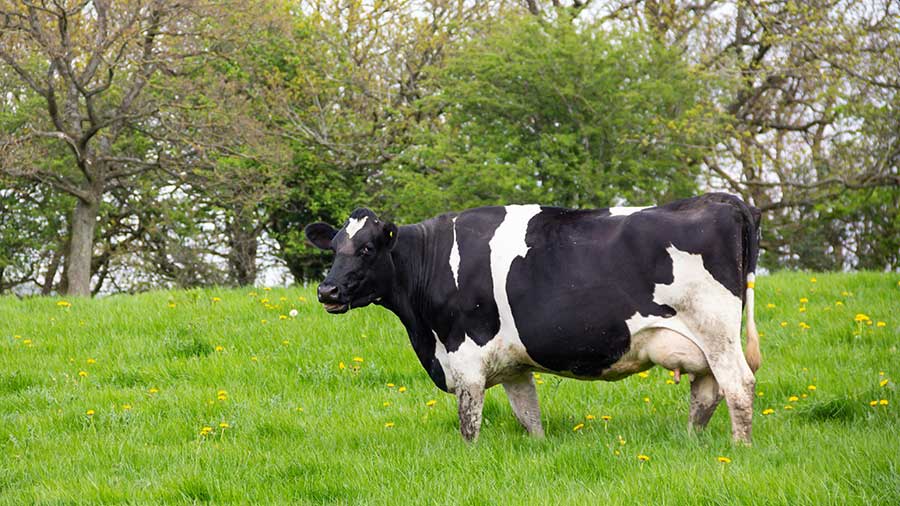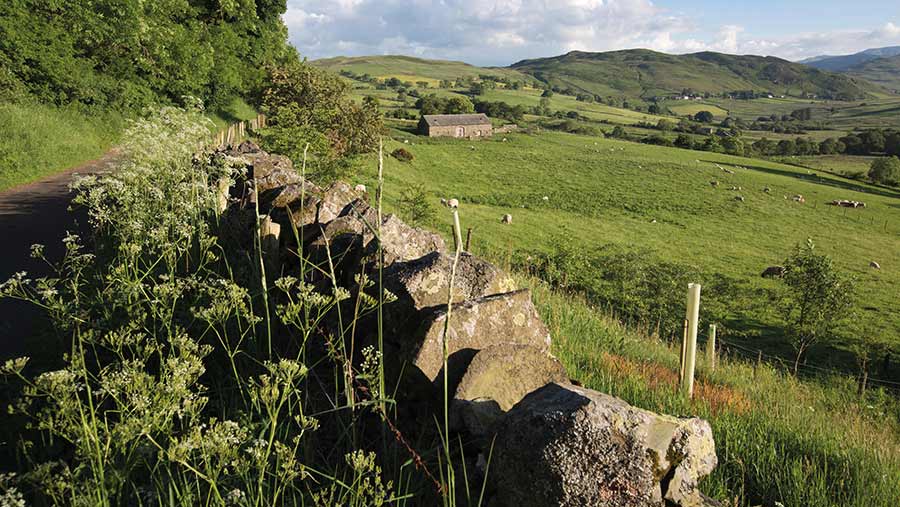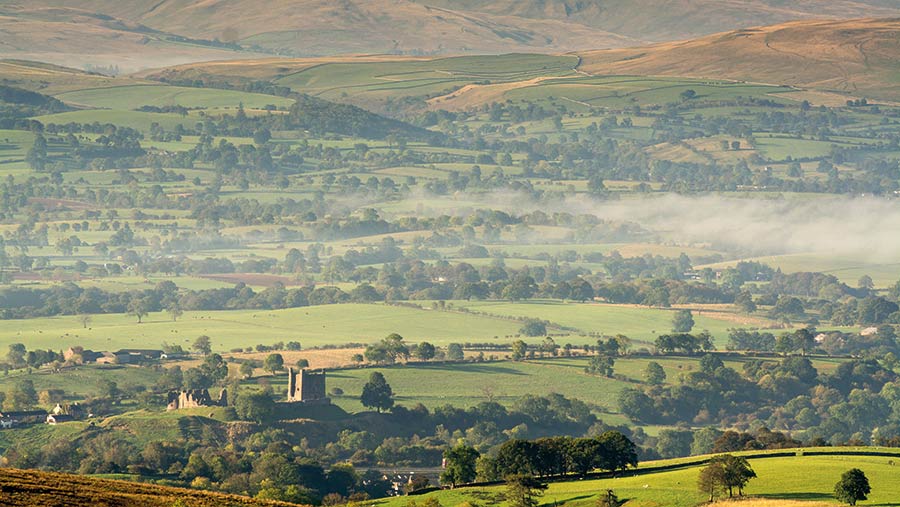Natural capital: Opportunities for livestock producers
 © AdobeStock/Eileen
© AdobeStock/Eileen Natural capital is a way of viewing the environment as a set of assets that benefit wider society, rather than any single individual or organisation.
Changes to on-farm slurry management, for example, can improve groundwater quality – benefiting water companies and the general population, not just the livestock farm where the improvements take place.
But it is difficult to put precise values on the work done and the public goods generated by improving natural capital. This challenge makes natural capital difficult to understand in a farm business setting.
In turn, this can make it harder for farmers to justify investing in natural capital instead of other parts of their business. As a result, farm output and productivity has often been at the expense of the environment.
To rectify this situation, public and private funding is increasingly used to encourage more sustainable farming practices, explains
Mark Reed, co-director of the Thriving Natural Capital Challenge Centre at Scotland’s Rural College (SRUC).
See also: Natural capital: What it is and how to value it on your farm
What is natural capital on a livestock farm?
Soil and water are the first two assets to consider on a livestock unit, says Prof Reed. Without productive soil and a water source, you don’t have a business.
Both these assets have value for the wider public because they are the foundations for wholesome food and clean drinking water.
In the face of climate change, both soil and water must be managed more carefully.
The impact on air quality from livestock methane, carbon and ammonia emissions is also important.
Further examples of natural capital include wildlife, biodiversity, field boundaries, hedgerows, woodland and grassland.
How to assess natural capital
Livestock farmers should start by establishing where their business stands through a programme of natural capital auditing and testing.
A range of tools can be used to assess soil, water and air quality, along with an overall carbon-footprint tool.
Any schemes – private or government- backed – are likely to want to measure improvements to base incentive payments upon.
So it is essential that there is a record for a baseline year, including maps of existing hedgerows.
A forthcoming code will require evidence of existing hedgerows and how planting has changed their extent, says Prof Reed.
Hill farmer Liz Lewis-Reddy, policy and economics director for Adas, says farmers should take a relatively straightforward first step towards auditing, such as annotating a map of the farm.
She suggests marking and listing all the farm’s natural assets.
“It is important to not just list the actively farmed areas but include everything – hedgerows, trees, watercourses and boggy or marshy areas.
“Also consider how it dovetails with the wider landscape, neighbouring farms and the potential demand/needs from the local community, private business and government objectives, as these are the future income that opportunities will arise from.”
Improving natural capital
Dr Lewis-Reddy applied this approach to her own hill farm in Wales.
It has some good grazing and floristic diversity, but other areas are less agriculturally productive because they are wet, slightly peaty, with soft rushes and few grassland species.
“The areas can’t be grazed for months each year so we looked at how they could be managed differently, within our organic, regenerative system, to benefit the environment and enable the farm to access new markets.”
Having done this, she then planned to plant small, carefully sited woodland areas to help improve drainage, taking advantage of the Welsh government’s Glastir Woodland Creation scheme.
The soft rush areas, which had declined over time, were harvested for bedding to improve the plant species, biodiversity and production potential.
This improved the carbon sequestering potential of the land, enhanced biodiversity and grazing potential.
“We knew grants were available for these options, and made applications that have helped fund the work,” she says.
Individual strategies
Soil and water
Soil nutrients can be depleted through leaching losses, over-production and ploughing. On the other hand, excess slurry applications may lead to nutrient saturation.
Soil testing is the starting point with 25% of the land sampled each year, so the entire farm is tested on a four-year cycle.
Profiling should include the full suite of nutrients, soil carbon and cycling organic matter as part of an active management programme.
Tillage practice should be assessed and geared to achieve the right balance of soil health without releasing carbon and damaging structure.
Better structure and organic matter will improve drainage, carbon capture and nutrient retention and reduce erosion.
This could increase the natural capital value, improving productivity and allowing the farm to quantify its value as a carbon sink or potential for water management, which may appeal to a utility company looking to manage waterflow and pollutants.
Grazing and grassland
Grassland acts as a carbon sink. But introducing a multispecies mix with nitrogen-fixing legumes and extensive rooting can further improve soil structure, biodiversity, carbon capture and nutrient retention.
The additional nutrients reduce the dependency on fertiliser, while high protein options improve the feed value.
Data suggests rotational grazing increases productivity because cattle and sheep consume younger, higher D-value swards.
The cows fertilise soil as they move round the system, and the organic matter improves soil structure and the associated benefits.
Field boundaries
Judiciously planted woodland can enhance a livestock farm, with trees planted strategically on unproductive ground.
But large-scale tree planting versus food production is contentious. An alternative is to improve or plant hedgerows.
Hedges have multiple benefits – improved shelter for stock, reduced soil erosion via the root structure and through acting as a wind barrier.
They also provide a haven for plant and animals and act as wildlife corridors, helping to join habitats and create scale.
Air quality
The government’s Clean Air Strategy will encourage farms to cut ammonia, methane and carbon dioxide emissions.
A polluter-pays system means using natural capital to offset emissions won’t necessarily increase returns, but will help to avoid penalties.
Emissions could be lowered by planting trees around slurry lagoons.
Precision slurry spreading, allied with soil sampling, will better match nutrients with requirements, reducing dependency on artificial inputs and improving soil fertility.
Rachael Madeley-Davies, consultant from dairy adviser Kite Consulting, emphasises the importance of a whole-farm approach.
Water quality, productive soils, the atmosphere, minerals and wildlife should all be considered.
“On the one hand, we are trying to redress the negatives that may have built up through poor practice and improve our natural capital to make the farm more productive.
“On the other, we want to create a net gain,” she says.
A damp field corner prone to waterlogging, can be difficult to farm and also harbour soil-borne disease and parasites.
Fencing off the area and planting trees could help field drainage and create an income from woodland grant funding.
Herd health, welfare – and hence productivity – would also benefit.
Extending this approach across the whole farm – from soil health to biodiversity – could yield further improvements, benefiting the environment and boosting farm income, says Ms Madeley-Davies.
How can natural capital be monetised?

© Jeff Gilbert/Alamy Stock Photo
Funding opportunities for natural capital are available in England through Mid-Tier Countryside Stewardship.
As these agreements expire, farmers will be able to sign up to the Local Nature Recovery scheme, due to launch in 2024.
NFU livestock adviser Harriet Henrick says farmers should prepare for this sooner rather than later.
They should assess their options and review their natural capital to ensure they are ready for the changeover.
Other potential funding streams include peatland restoration, woodland creation, and maintenance grants and codes for hedgerows and soil carbon.
But she is cautious about the structure of these schemes. Payment systems for natural capital management are aimed at measured changes.
While this is appropriate where improvements are needed, Ms Henrick says asset protection should also be recognised.
Permanent pasture acts as a huge carbon sink, yet this is largely overlooked and undervalued by policymakers.
“This vital role in preventing carbon emissions is as valuable as any other measure,” she says.
Anyone considering privately funded schemes should seek advice before signing contracts.
A farmer might face a battle with a corporate lawyer, for example, if they fail to meet the terms of a the contract.
SRUC’s Mark Reed urges caution in signing deals with big carbon-offsetting schemes.
Scotland, in particular, is seeing large-scale tree planting pushed by large companies, often based offshore.
As well as taking farmland out of production, this can have a huge impact on the community.
Often farmers are approached with a tempting offer of a potential retirement nest egg. In many cases, the corporate will have targeted farmers across a whole area.
As a result, entire communities have been surrounded by vast plantations of mono-cropped, conifers and left devastated.
As well as consulting advisers, farmers should talk to their neighbours. Collective bargaining can yield a better return, while preserving food production and the landscape, says Prof Reed.
Big business pays better than Countryside Stewardship
Private companies and other commercial businesses are helping farmers monetise natural capital – often at higher rates than Countryside Stewardship.
Sustainability consultant 3Keel works across the food and agricultural supply chain.
Its remit to make agriculture more resilient includes helping groups of farmers market their natural assets, says principal consultant Catherine McCosker.
Turning natural capital from a concept into net gain requires many farmers to adopt a new mindset, says Ms McCosker.
Once they do so, the farm’s natural capital can be more easily identified and marketed.
Flood management, for example – perhaps by constructing a pond – could be an attractive asset to a utility company or local authority.
This could generate a payment and become a marketable product, just like milk.
But just as large-scale buyers don’t want to purchase a single litre of milk, one pond alone won’t solve a flood.
This means farmers need to deliver scale – either by working with one another or an organisation such as 3Keel to attract corporate investors.
One alternative system to marketing natural assets could be through a company such as Entrade – a subsidiary of Wessex Water.
It was faced with building a treatment plant to remove nitrates that were polluting Poole Harbour in Dorset.
Instead, the company paid farmers to reduce nitrate pollution by planting cover crops and buffer strips to protect watercourses.
Initially, farmers bid for funding through a reverse auction. But this meant bids were low and farmers were not properly rewarded.
It also meant other benefits from cover crops – such as carbon retention and soil health – were not properly remunerated.
The original system has now been replaced with one that matches farmers with buyers looking for multiple environmental outcomes.
Farmers are paid much more than Countryside Stewardship, which is only based on income foregone.
James Peacock, Entrade product manager, says: “We are seeing large-scale demand from developers – required to reduce nutrient output from construction – to buyers looking for water quality, carbon and biodiversity improvements.”
Project creates resilient dairy landscapes

© Wayne Hutchinson/Alamy Stock Photo
A £1.5m project is matching farmers with private investors to offset carbon emissions and improve biodiversity, soil and water quality by planting hedgerows.
The Landscape Enterprise Networks (Lens) initiative, developed by 3Keel, encourages businesses to invest in landscape management.
One of the first to invest was Nestle-First Milk, which has been working with farmers in the Eden Valley, Cumbria.
Said to be simpler that publicly funded agri-environmental initiatives, Lens has encouraged hedgerow planting at a rate four times faster than government-backed schemes, says Scotland’s Rural College professor Mark Reed.
Backup work to evaluate soil and water quality showed the scheme had widespread environmental benefits.
Dairy farmers said they preferred the private funding route because it was more flexible, with less red tape than stewardship schemes.
Private finance could encourage an even greater uptake of natural capital improvement on UK farms, says Prof Reed.
“Lens is now a proven method for enabling companies to invest in the natural capital they depend upon.”
